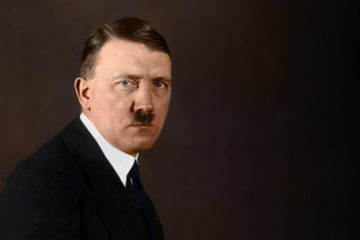Organicists and Systematists
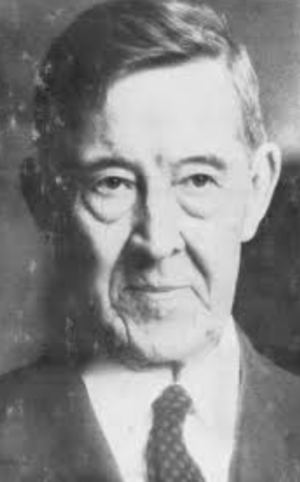 A quick scan of modern philosophers of history from Danilevsky to Schweitzer
A quick scan of modern philosophers of history from Danilevsky to Schweitzer
IF WE MAKE an exception for Will Durant, the Simon and Schuster chronicler, the best-selling historians of the twentieth century are organicists — giants of insight like Spengler and Toynbee, whose polymathic sweep of the past projects deeply into the future. Their works seem to resonate with a diastolic, systolic beat that implies civilizations live and die in much the same fashion as the men who participate in them. Other philosophers of history, some not so well known, take an inorganic view. Like the organicists they believe we are in a dangerous era of decay or transition, but they systematize rather than biologize.
Since few individuals have the time and intellectual resources to plow through the souped-up, often prolix and footnote-ballasted volumes of contemporary philosophers of history, Pitirim Sorokin (pictured) has given us the meat of their principal works in a great, though greatly neglected book Modern Historical and Social Philosophies. Sorokin, a young apparatchik in the early Bolshevik government, turned from Red to White and fled to the U.S. in the early 1920s, where his unmatched erudition and his zest for analysis on the grand scale quickly made him one of the world’s foremost social scientists. He founded the sociology department at Harvard in 1930 and was the author of a ream of modern sociological classics. He died in 1968 at the age of 79.
Danilevsky
Sorokin initiates his encyclopedic study with a chapter on Nikolai Danilevsky (1822-1885), whose theories of history more properly belong to the twentieth than the nineteenth century. Sounding like a first draft of Spengler’s Decline of the West, Danilevsky’s magnum opus, Russia and Europe, was published in 1871. Although it was not translated into German until 1920, when Spengler had already written the first edition of his book, there had been an abbreviated French translation in 1890.
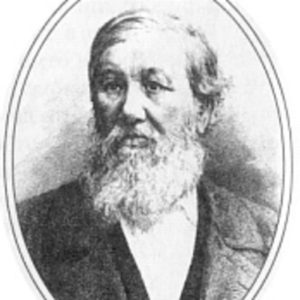
Danilevsky was a Pan-Slav who felt there was an unbridgeable historical and cultural gulf between Russia and the rest of Europe. To validate his case, he undertook a panoramic analysis of world history, in the course of which he discovered twelve separate categories of civilizations. Some of these he called positive, others transmissible. All of them had a full life span, with the exception of the Mexican and Peruvian, which were extinguished by the Spaniards before their time had run out. Certain peoples, like the Huns, Mongols and Turks, were not civilized, properly speaking, but were better described as the “negative agencies” of history. Danilevsky recognized race as a factor in both the forming of civilization and in the various processes of colonization, grafting, and fertilization by which civilizations are diffused. He went into great detail about the blossoming periods of his twelve civilizations, a comparatively short phase which exhausts their creative powers and never repeats. In its efflorescence each civilization produces one and one only characteristic value — the beauty of the Greeks, the religion of the Semites, the law of Rome, the science of the West.
Nikolai Danilevsky directly anticipates Spengler when he says not only the arts but the sciences bear the characteristic stamp of the civilization that produces them. He elucidates the English character as a mix of the warlike anarchy posited by Hobbes, the unregulated competition of Adam Smith, and the Darwinian fight for survival. In the matter of historic cycles he states Europe is in a steep decline, while the Slavic civilizations are on the way up. He designates the European or Germano-Roman civilization a double civilization that specializes in both the political and scientific field, while predicting that the emerging Russian-Slavic imperium will be a triple or quadruple civilization — creative in religion, science, politics, and economics, with the accent on the last. Danilevsky, moreover, foresaw a European attack on Russia, which his admirers could claim was borne out in the 1941 assault of the Wehrmacht and its many non-German volunteer divisions. All in all, if we eliminate the Marxist verbiage, there is a remarkable similarity between Danilevsky’s views and Russia’s present-day domestic and foreign policy.
Spengler
Oswald Spengler, an unknown high school teacher, began his famous work Der Untergang des Abendlandes in 1911, the first version of which was not published until July 1918, a rather appropriate time for a pessimistic German to introduce the classic work, at least from the Western perspective, of historical pessimism. There are striking similarities to Danilevsky, though Spengler with his Copernican world view gives no priority or favoritism to the Western and Classical cultures. In contrast to Danilevsky’s twelve civilizations, Spengler lists eight. Russia, which has already undergone a pseudomorphosis, offers the possibility of the ninth. Spengler agrees with Danilevsky that the word Europe should be stricken from history books. The separation of Western and Eastern Europe is nowhere so great as it is in religion. The West has or had faith in a father god, in contrast to the fraternal god of the Russians, who when given the chance call Christ brother.
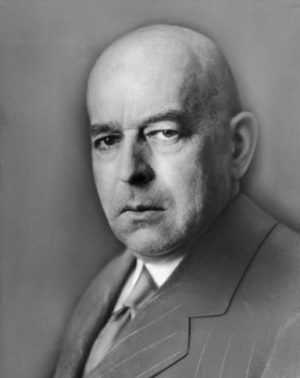
Many readers of Spengler will probably agree that he is as much of a poet as a historian. The image of Faustian man, the hero at odds with himself and god, drifting in limitless space is not an easy one to forget. Equally poetic are Spengler’s prime symbols-the stone of Egypt, the nude statue of the Apollonian or Greek culture, the cavern of Arabian culture — as well as his Nietzschean attacks on money and democracy which undermine themselves and are “eaten up from within.” Yet Spengler’s unwillingness to tackle the race issue, his surgical dissociation of the ancient Greeks from the medieval and modern civilizations of the West, in spite of the common ethnic denominator, does not add much pride, depth, or mystique to the history of his own people.
Another of Spengler’s great poetic symbols is the dying Western megalopolis where in Sorokin’s words, “The lord of the world, the Nordic man, is becoming the slave of the machine.” Technology and equalitarianism are the symptoms as well as the causes of our approaching rigor mortis, which will become official as Westerners prepare to sell their souls to a Caesar. There will remain some freedoms, but the media will condemn any idea to death simply by not reporting it. As Sorokin explains Spengler’s meaning, “In lieu of the state and faggot, there is the great silence.”
Toynbee
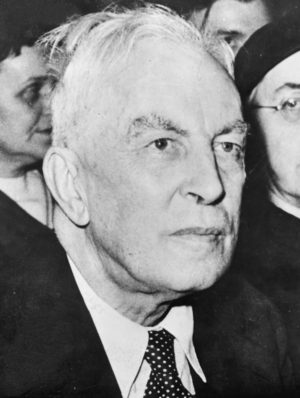
There is no need to review the basic propositions of Spengler’s philosophy of history. It would take a hundred pages and most literate minds are already familiar with the main outlines. So we will pass on to Toynbee, who might be described as Spengler’s “Christian” pupil. Born in 1889, Toynbee certainly had as good or better grounding in the classics than Spengler, but he was deficient in mathematics and science. He published the first six volumes of his Study of History in 1934-39 and the remaining volumes, plus a long postscript entitled Reconsiderations, after World War II.
Toynbee’s twenty-one civilizations, not one a product of the Negro race, have become standard historical fare, along with his theories of challenge and response, rout and rally, withdrawal and return, internal and external proletariats, apparentation and affiliation, schism and palingenesis. His aversion for Israel and what he called “fossilized” Jewish culture made him very unpopular in Hollywood and Harvard. The demise of civilization is accounted for by the decline of the power of the creative minority, which is transferred into a merely dominant minority that the majority is no longer willing to imitate. The death stages, which begin in a universal state, follow a set pattern. Although Toynbee’s whole study is based on the cyclic nature of history, he gets an eschatological glow from religion and he seems to believe that the Hegelian end of history is Christianity.
Schubart
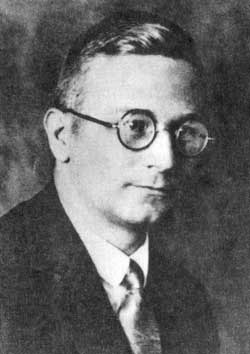
Proceeding from Toynbee, whose works have been popularized in a one-volume condensation that has sold in the hundreds of thousands, we reach the little known German scholar, Walter Schubart, who does not agree with Spengler that “Cultures are organisms, and world history is their collective biography.” Schubart’s system is based on four “aeonic prototypes” of culture and personality which transcend the boundaries of race and nation: the harmonious, the heroic, the aesthetic, and the messianic. At present we are in an intermediary apocalyptic period. Geography, not race, creates the differences in man, as well as the “landscape atmosphere” and “landscape spiral” which separates one group from another. Those who assume the lead during the different aeons comprise the group most congenial to the spirit of the aeon. “The Nordic Promethean culture is dying, its place to be taken by a Slavic one. Russia’s mission consists of retrieving [mankind’s] soul for humanity. Because of its opposition to the surfeit of goods which is driving the West to indecision, Russia is the only country which can … free Europe.”
Continuing in this vein, Schubart sometimes writes like a John the Baptist beating the bushes for a Russian savior. Occasionally his works read as if they were co-authored by Dostoyevsky and Solzhenitsyn. He explicates the East-West conflict by saying Europeans only want to improve their work, while Russians desire to spiritualize it from top to bottom. The former’s soul is permeated by primeval fear and anguish, the latter’s by confidence and trust. “Only the Russian All-Man as the bearer of a new solidarity can free humanity from the superman’s individualism as well as from the subman’s collectivism of the mass.”
Berdyaev
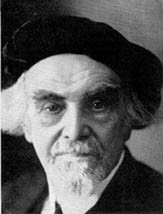
The second Russian on Sorokin’s list is another systematist, Nikolai Berdyaev, a Marxist turned mystic, who died in France in 1948. Berdyaev differs from most of the others in his definition of culture, which is not the realization of a new way of life or a new existence, but the realization of new values. All cultural achievements, he writes, are in the final analysis symbolic rather than realistic. Forecasting a less rosier future for Russia than Schubart, he asserts: “The traditions of culture have always been weak in Russia. We have built a rather ugly civilization. Barbarian forces have always been strong with us. Even our will towards a religious transfiguration of life has been infected by a sort of sickly day-dreaming.”
Berdyaev, like Spengler, relies on a direct intuitive grasp of history to bring it to life and to make it understandable. He rejects all theories of progress. Although the body of the culture may die, its soul survives in its perennial values. He considers the present age as a transitional one, the end of the Humanist period and the beginning of a new “Middle Ages.” The monks and knights disciplined and religified men in medieval times, he declares, and they are needed again if European civilization is to endure.
Northrop
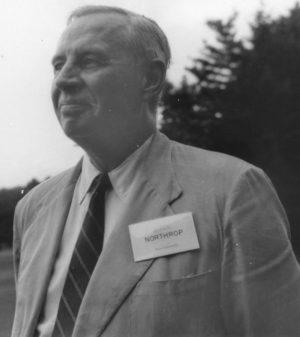
F.S.C. Northrop, a Ph.D. from Harvard, became the commander of a tank corps in World War I, after which he was appointed professor of law and history at Yale. His most important work is The Meeting of East and West, in which he strives to demonstrate that the basic differences in culture, particularly differences between Oriental and Occidental cultures, are based on their differing concepts of science. As for America itself, “The soul of the U.S. is variable Anglo-American, but its diverse culture rests largely on the thought of John Locke.” At the bottom of it all are the mathematics and physics of Galileo and Newton.
Northrop illustrates his main thesis with an investigation of the culture of Mexico. In one square mile of Mexico City he finds five distinct cultures: Aztec, Spanish colonial, French nineteenth century, Anglo-American economic, and contemporary Mexican — all “harmonious yet competitively diverse.” In a brilliant tour de force of cultural detective work, he then shows how the interaction of these cultures produces the glorious frescoes of Orozco. As for the United States, he pronounces it to be chiefly a Lockean-Protestant-Individualistic-Businessman-Atomistic-Operational cultural system. (He wrote this in 1946.) He finds traces of all these cultural ingredients in Grant Wood’s noted painting, “The Daughters of the Revolution.”
Kroeber
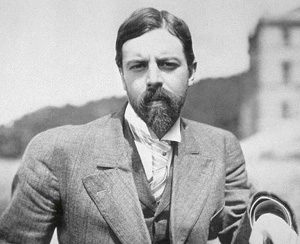
Alfred Kroeber, though one of the great modern anthropologists, is not generally considered to be a major historian. His principal work Configurations and Cultural Growth (1944) is more likely to be found in the anthropology than in the history section of libraries. Nevertheless, it contains a wealth of informed speculation about the nature of history. Kroeber makes a meticulous study of the world’s geniuses and uses it to date the productive and nonproductive eras in each civilization’s lifetime. He discovers what he calls a “skew curve” in most of them — three centuries of rising development, followed by eight of decline and extinction. Unlike Spengler and Toynbee, Kroeber finds two or more blossoming periods in the great cultures and states that the presence or absence of religion is not of crucial importance to cultural growth. In history he thinks there is “nothing cyclical, regularly repetitive or necessary.” When the “high value” patterns of Goethe’s writing, Beethoven’s music, Kant’s philosophy dissolve, we have “jagged rhythm and dissonance in music, free verse, plotless novels, cubism, abstractionism and surrealism in sculpture and painting.” But until science and industrial production shrink, it would be rash to predict the impending demise of the West.
Schweitzer

Albert Schweitzer received a great deal of publicity in his day for his medical work in darkest Africa. His studies of religion and music are well known, but not his views and ideas about history. We are aware of his “reverence for life.” We are not aware that he declared, “Moral control over man’s dispositions is much more important than the control of nature.” To Schweitzer ethics was the key to civilized progress and he shared Toynbee’s feeling that the rise and fall of a culture was to some degree attuned to the rise and fall of its ethical values. With morality as a measuring stick, it is not difficult for Schweitzer to agree to the Spenglerian timetable of Western decline and fall. In fact he seems even more pessimistic than Spengler when he declares, “the earth no longer has a reserve as it had once, gifted people as yet unused, who can relieve us and take our place in some distant future as leaders of spiritual life….” One thing can be said for Schweitzer and his mystical and almost Buddhistic antipathy to science and pragmatism: He practiced what he postulated.
Sorokin
Although his book puts most of the emphasis on other historians and philosophers of history, Sorokin occasionally devotes some space to his own ideas. He believes that the development and decay of civilization follows a prescribed pattern, but not an organic one, although race and genetics have some influence on the form and content of civilizations. According to Sorokin, all societies swing back and forth between an ideational and a sensate stage. The former is anti-intellectual, authoritarian, religious; the latter empirical and based on the natural sciences. Although he cannot entirely escape from the charge himself, Sorokin lashes out at both the organicists and systematists for basing so much of their arguments on invented cultural entities which in the strictest sense have never really existed and which are indefensible hypergeneralizations.
A more realistic view
It is easy to criticize and even to disparage, as many liberal and minority scholars have done, the great modern philosophers of history. All of them are guilty of squeezing facts and events too tightly into their schematic mold. Also, in spite of their great intelligence, none of them could possibly possess the Olympian knowledge necessary to induce anything more than provisional theories out of the paucity of historical evidence. So much of man’s past is unknown, unfathomable, or just plain falsified.
Missing in nearly every one of these historians is the genetic factor or at least the proper emphasis on the genetic factor. Some admit a biological rhythm to historic cycles, but little or no attention is given to the relation of the biological type to the cultural type.
All these eminent scholars to the contrary, it may be that the life spans of the various White civilizations are in reality one stage of a civilization or culture that is still in its babyhood. The life span of the European peoples may be tens or hundreds of thousands of years, and the present-day Western civilization may simply be another flurry of our youthful immaturity rather than our senility. The downfall of India, Persia, Greece, and Rome may be nothing more than childhood diseases, the taking to bed for a week or two to shake off the fever, while the body and the spirit gather strength for greater growth. Indeed, the real goal of Western history may be the striving of our race to transform itself into a species.
Spengler and others in their disregard for race may have seen a series of circles where there was only a wave form. Not a horizontal wave form, but an ascending one — full of downswings and upswings, but always and relentlessly ascending.
* * *
From Instauration magazine, May, 1976



